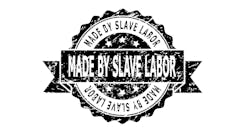Before COVID-19 took hold across the country, the economy was booming. In February 2020, the U.S. unemployment rate was a mere 3.5% and it was difficult for distribution centers (DCs) and warehouses to find talent. Many worked with recruitment and staffing experts who could help them source candidates, arrange interviews, extend offers and conduct onboarding.
In the face of the pandemic, a few large organizations including Amazon and FedEx—as well as essential goods providers such as grocery stores and pharmacies—saw rapid increases in demand for their products and services, and even had to hire workers to meet that demand. However, many warehousing and DC employees, especially those who worked in non-essential goods and services, were laid off or furloughed.
Months in, however, facilities transformed in the face of COVID-19. They reorganized shifts around bubbles of employees; conducted health and temperature checks at the beginning of shifts; required masks and physical distancing throughout the facility; and trained employees on new health and safety measures. And, with a trend away from lean inventory toward more safety stock, more space is required to store additional inventory and more workers are required to manage it.
With COVID-19 surges and declines have come subsequent fluctuations in how consumers are acquiring goods. When COVID-19 peaks and people stay home, household deliveries increase and store visits decrease. When COVID-19 rates decline, the inverse is true. Such shifts have led to significant uncertainty around demand for warehouse and DC workers.
Thankfully, several COVID-19 vaccines have been approved and are being rolled out across the country and around the world. An end to the pandemic is in sight. Yet, as organizations have rapidly accelerated their adoption of technology and digitization during this time, recruiting and hiring across industries have likely changed for good.
Given this transformed environment, how can DC and warehouse leaders manage recruiting and hiring? By embracing several best practices, they can be ready for fluctuations in worker demand, no matter how sudden or extreme. In the future, they’ll be prepared to seamlessly scale their workforce, no matter what comes their way.
Embrace a Digitized Approach to Recruiting
The light industrial space traditionally conducted a large portion of interviewing and onboarding activities—including drug screens and onboarding paperwork—in a face-to-face environment, either at staffing branches or client locations. However, in the midst of the pandemic, there is much more sensitivity to bringing in candidates on-site until they are employees and can undergo a health screening to confirm they are free of SARS-CoV-2, the virus that causes COVID-19. They also must be trained on safety protocols, which are more important than ever.
For these reasons, DC and warehouse recruiting has gone digital and likely will remain that way until organizations and candidates are comfortable meeting in person again. For example, virtual interviewing has taken over. Technology platforms enable video or audio interviews that go through questions such as, “Can you lift 50 pounds? Do you have a felony on your record? Can you pass a drug test?” Candidates can record video or audio responses at their leisure and submit them to recruiters, who listen and respond—sometimes with a tentative job offer—within 24 hours.
Digital candidate assessment and testing platforms allow candidates to complete assessments remotely. Drug tests can be conducted off-premise via third-part relationships and hiring manager interviews can be conducted via video or audio technology. Warehousing and DC recruiters then can integrate all of these steps into an automated workflow to ensure that candidates move quickly through the recruiting funnel, which helps fill roles quickly when demand spikes.
Recruitment marketing and direct sourcing will continue to drive applicants. However, with fully digitized recruiting, light industrial organizations can leverage artificial intelligence (AI) to create search strings to parse resumes off job boards, engage candidates electronically and convert them into applicants. AI, chat, phone and email then can be leveraged in recruiting—from assessing candidates to scheduling interviews to answering standard questions. Email and chat are key interaction mechanisms to manage the candidate experience, but all communications channels should be interchangeable and accessible via mobile devices to maintain a consistent candidate experience.
Optimize Remote Recruiting and Hiring
DC and warehouse recruiters and managers traditionally handled screening and interviewing in person. Now, however, most aren’t bringing in candidates until later in the funnel, as more and more organizations are leveraging prerecorded or real-time video or audio interviews. Some corporations have moved almost the entire interview and hiring process offsite. For example, drug-testing is more often done through a third-party. Once the candidate has passed that and a background check, the candidate is extended an offer. Only when they’ve accepted the offer are they invited onsite for new hire orientation.
In this new normal, digitization administered via mobile first platforms can enhance remote recruiting via:
• Video on demand—the ability to ask questions and receive candidate answers via text, video, audio, multichoice, and single-choice. A typing test can be incorporated into this process.
• Virtual job tryout—pre-employment assessments are built on data predicting job performance in specific roles.
• Realistic job preview—engage candidates with an honest look at the job, organization and culture, enabling them to make informed decisions about their fit for the job.
• Career stability assessment—this helps organizations efficiently screen out candidates who are a high risk for turnover.
Prepare for Uncertainty around Demand
In the face of COVID-19, traditional economic and supply chain forecasting models—and, correspondingly, talent acquisition planning models—don’t work.
For example, when the pandemic first hit, people were instructed to shelter in place. Stuck at home, consumer behavior changed and there was massive demand for sanitizers, paper goods, PPE and quarantine-friendly consumer products such as TVs, furniture, appliances and bikes. Such factors placed incredible pressure on the global supply chain, from manufacturing to delivery.
How can DCs and warehouses manage recruiting and hiring given this unprecedented level of uncertainty? Flexible technology, processes, and organizational alignment with partners are key to keeping fixed costs low and optimizing scalability. Ensuring they are able to scale recruiting up and down quickly, and recruit remotely, is important. Partners will play a key role in both of these scenarios. Cost-per-hire models for contingent labor may become more common as predictability of demand goes out the window.
Flexible Partners and Strategic Recruitment Marketing
A new kind of partnership is needed. Rigid annual contracts no longer work in the face of the past year’s uncertainty. Instead, light industrial leaders should look at flexible, more dynamic partnerships that can scale up and down with a few days or weeks of notice. For example, a warehouse or DC with seasonal demand shifts or high-volume recruiting needs might benefit by partnering with a flexible recruitment process outsourcing (RPO) provider.
Remember, scaling up is easier when it does not require hiring resources. Light industrial organizations can better ramp up (or down) during times of uncertainty if they digitize a larger component of the recruiting process, leverage strategic recruitment marketing, and work with flexible recruiting partners that can scale quickly. By increasing spend for placements, organizations can increase their applicant volume without having to add recruiters. The key is to strike the right balance when considering cost per application, job title and openings that must be filled.
Warehouses and DCs, like most other industries, have been catapulted into a world in which recruiting and hiring have been digitized. With the right technology, processes and partners, they can embrace this new normal to improve the candidate experience, worker quality and employee retention. A flexible partner can look at your hiring needs and help you optimize process flow by leveraging the right technologies. Whether you’re managing a large or small warehouse or DC, the right partner can help you through any uncertainty.
Brian Cotter is president of PSG Global Solutions, a provider of outsourced recruiting support to the global staffing and recruiting industry.



